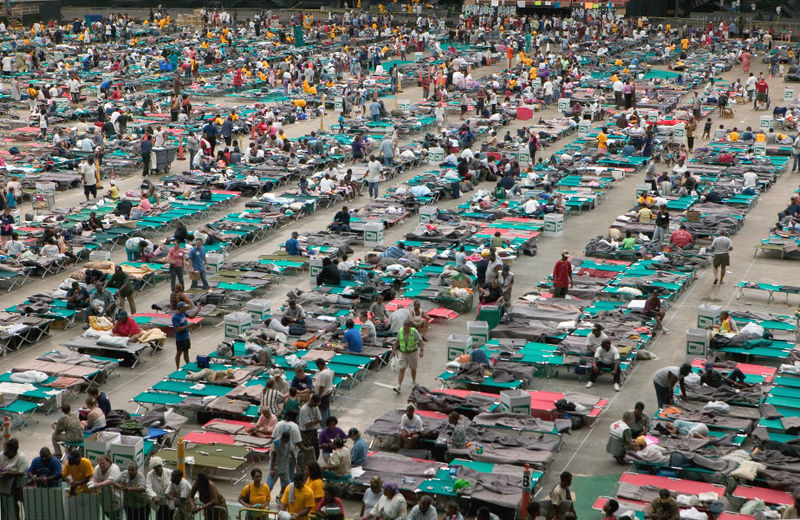
With the recent hurricanes pounding Texas, Florida, Puerto Rico and creating surreal apocalyptic devastation across many of the Caribbean islands, getting help to the residents of these areas is extremely complex and dangerous. Hurricanes, earthquakes, tornadoes, wildfires, wars, and political oppression can create displacement of a few to hundreds of thousands of people. Many of these natural or man-made disaster refugees become injured or ill as a direct result of the situation or as a secondary insult from contamination, lack of needed medications, spreading infectious diseases while gathered together in shelters or camps, further injuries, and shortages of food and water.
Post-disaster, getting medical personnel into a position to provide the expertise needed for the ballooning injured, ill, or at-risk population may not be safe. But there is one way to minimize the number of medical providers needed to go into harm's way and utilizing valuable in-the-field resources yet provide expertly guided care to the people. That way is through the deployment of telemedicine kits and services.
With an internet or even just a cellular connection and a mobile telemedicine kit, health care providers far and wide can offer examinations, expert guidance, and therapy to the people in need with the assistance of a medical assistant, nurse, EMT, or other as the patient’s side. Disaster telemedicine services can pull in emergency physicians, pediatricians, social workers, mental health providers, and specialists to a tent city, a football stadium turned shelter, or directly into the heart of the disaster zone.
Through involvement in the American Telemedicine Association and various other telemedicine groups, including on Facebook . . . what I have seen voiced is frustration among physicians and other clinicians across the country who provide quality care and guidance using technology as an examination tool that states are not quick to relax their medical licensure laws during a disaster. This makes it stressful that a medical provider that is board-certified and licensed to practice medicine after grueling through school and residency, is often not allowed to help those in the disaster area states because they do not hold an active license there.
Now to be fair, we do have Disaster Medical Assistance Teams(DMATS) organized under the Department of Health and Human Services(DHHS), but these rapid-response resources are also manpower and time-limited. Telemedicine teams across the country can supplement these teams and provide long-term medical assistance.
Care on Location and many other telemedicine services either purchase or build these deployable telemedicine kits for use in assisted living facilities, school nurses' offices, or rural clinics. However, these kits which are often housed in military-grade cases can easily be purposed for the very task of being a key tool in tough environments to provide medical evaluations. Our kit contains a tablet computer, a digital USB ear, nose, throat & skin camera, a digital USB stethoscope, and various other diagnostic devices that allow a distant medical provider to get a thorough exam done.
During these recent disasters, several telemedicine services and telehealth-providing hospital systems took part in being an important part of the disaster response. Most of those that participated were services that were already operational in the states where help was needed.
While we do not wish to experience or witness future disasters, we know they are inevitable. It is our hope that a significantly larger portion of the medical population of this great country can be granted the opportunity and rally around those in need when the next one hits by being able to participate from within their own communities through a more efficient and safer telemedicine interface. This will allow health care providers around the country to do more than sit idly by or just donate money, they will be allowed to do what they were meant to do — Help People.
Care On